– John McGivern: This area along the Illinois River was once referred to as Zinc City.
– Announcer: We thank the underwriters of John McGivern’s Main Streets because without them, we couldn’t make this show.
– Heiser Automotive is honored to help John McGivern and his team arrive safely to many Main Streets.
We are committed to remaining true to the Heiser way: Do what’s right for our customers, our employees, and the communities we serve.
We are happy to help.
– There’s no place like Oconomowoc.
Explore, play, shop, stay.
Visit Oconomowoc!
– Your community’s best selfie spot is Your-Type!
– You’ll find your bright spot in Sun Prairie, Wisconsin.
– My father taught me that to make great bakery, you have to do it the right way.
O&H Danish Bakery, where kringle traditions begin.
– Yes, Greendale is beautiful on the outside.
But it’s what’s inside that counts.
Who doesn’t love opening a door to great food?
Whether you want to go casual, upscale, or maybe you want to try something brand-new!
Come on in!
You just gotta see Greendale.
– Announcer: Horicon Bank: The Natural Choice, West Bend Insurance Company: The Silver Lining, the Friends of Main Streets, and the Friends of PBS Wisconsin.
Thanks, underwriters.
‘Cause these are our Main Streets Something ’bout a hometown speaks to me There’s nowhere else I’d rather be The heart and soul of community’s right here On these main streets – Did you know that Illinois has its own twin cities?
I am in LaSalle, and Peru is right there, and each have a population of just under 10,000.
LaSalle and Peru lie in a region of the state called the Illinois Valley that goes east to west along the Illinois River, just before that river bends south towards the Mississippi.
LaSalle and Peru are 85 miles southwest of Chicago, halfway between Rockford and Bloomington.
This is LaSalle and Peru.
Emmy.
– Emmy Fink: Hello!
– History of LaSalle and Peru, do you have it?
– I do have it.
– Good.
– And let’s take a seat.
You know, we could be here a while.
We’re starting back in the 1830s.
– Perfect.
– With the construction of the Illinois and Michigan Canal.
It started right here in LaSalle at the Illinois River and ended in Chicago at Lake Michigan.
– John: How did this river town become “Zinc City?”
– Emmy: Well, coal.
Coal can be smelted down into zinc, and there were two men, Frederick Matthiessen and Edward Hegeler.
– John: Hegeler.
You know, this is his house.
– Yes.
That’s why I met you here.
Well, they realized they had something there, and so, ten years later, they were producing more zinc than anywhere else in the country.
– Hence “Zinc City,” and those names that you said, Matthiessen and… – Emmy: Hegeler.
– Hegeler, all over the place.
– They had such a big hand in making this area what it is.
– John: Yeah.
– And the good people of LaSalle and Peru, they’re just so committed to honoring that history right here.
And this seat is hot.
– It’s hot.
Let’s go, let’s go.
– Can we move on?
– [high-pitched] Let’s go talk about something else.
[Emmy laughs] I am inside the Hegeler Carus Mansion.
This is amazing.
– Laura Walker: Yes.
– John: Square footage, do we know?
– 16,000 of usable, livable space, but total of over 20,000 square feet.
– John: When was the first brick laid?
– Laura: 1874, and they completed construction in 1876 with 200 workers.
– He looks serious.
Who is this?
– Laura: So this is Edward Hegeler.
He is the namesake of the home.
– John: And I called it the Hegeler Carus Mansion because those are the two families that lived here.
– Laura: Correct.
The Hegelers had ten kids.
Mary would have been the oldest.
– John: Okay.
– Laura: And Mary Hegeler married Paul Carus.
Paul Carus started here as the tutor for the Hegeler kids and was later made the editor of Open Court Publishing, which is also why we’re a National Historic Landmark as of 2007.
So what you see across the way is the children’s balcony.
So the children would have put on plays, they would have played musical instruments, and the family would have sat on the stairs and watched them perform.
The children’s room would have not only been used as a playroom, but they also would have eaten in this room until they were able to carry on an adult conversation in the dining room.
– I’d still be in this room.
– You’d still be in this– [laughs] We’re gonna head into the family room.
– John: Where they had the television.
[both laugh] – Laura: Yeah.
So the gym was designed after the Turner Halls.
– And this was part of their home.
– Laura: We believe it’s the oldest gymnasium inside a home in the U.S. And these are what the women would have used.
– Oh!
[Laura laughs] – Yeah, forget the Peloton.
[both laugh] – John: Who’s in charge now?
– Laura: So the Hegeler Carus Foundation was started to preserve and to restore the mansion and also to begin the museum.
– John: How does one approach this?
– Laura: So we are currently working on a strategic plan, which will tell us where we’re going, right, and then, on the tail end of that, we’ll do a capital campaign.
– John: The thought of getting this done, is it kind of overwhelming?
– Laura: It’s gonna be upwards of 20, 30 million dollars.
– John: Wow.
That’s a big campaign.
– Laura: [laughs] Yes, yes.
– John: You go.
– Laura: We need all the help we can get.
– John: You do, it’s good, yeah.
– Laura: But we’re gonna get there, right?
– This right here is the Westclox factory.
Isn’t it beautiful?
I feel like I’m on a movie set.
Well, it shut down in the ’80s, but over the last 12 years, I’m telling you, it has gotten quite the makeover.
It’s now home to a flashlight manufacturer, a day spa, music studios, art studios, a distillery, a pizza restaurant, you name it.
There is new life here in Peru.
And here, you will find the Westclox Museum.
So there are hundreds and hundreds of clocks on display where they made them right here on-property for almost a century.
This was the monthly in-house employee magazine, because, of course, you have to know the bowling scores from the bowling team for the last month.
– Did you ever notice that all of the clocks were set for 3:43 and a half?
Okay, there’s a legend that it was because that’s the moment that Abraham Lincoln died.
The truth is, is that they set ’em all so that you could look at the Westclox logo, and that it was a pleasant way to look at each of the clocks– 3:43 and a half.
History.
Westclox.
We’re at Maze Nails.
Is Maze the family name?
– Roelif Loveland: So the old, original Mr. Maze was Samuel Nesbitt Maze.
In 1848, he started this operation, and so I’m the fifth generation in the business.
– Is that right?
– With some sixth generation behind me and a lot of great non-family employees.
It makes me proud, and these are people I grew up with, a lot of ’em.
So it’s fun to be surrounded by family and friends.
So this factory we’re gonna go through today is about a hundred years old, but the original nails were made down at Maze Lumber, the retail spot, just in a little, teeny back shed.
– John: Yeah.
– Roelif: It’s a heat-treated nail.
It’s made out of high-carbon steel, so it’s very, very tough.
In 1922, my grandfather and his brother– now the third generation– decided, “If this nail thing’s gonna take off, we’ve got to have a factory,” so that’s when this factory was built.
– And you can’t tell how many nails are in this bucket?
– No, I can tell you there are 600 nails in a pound, and there’s 2,200 pounds.
– Okay, well… – 2,244.
Can you do it?
– I’ll play.
[laughs] – Can you do that in your head?
So we’re into specialty nails, so we’re always doing something a little bit different.
We’re hot-dip galvanizing, we’re painting nails in a ton of different colors.
– I am in a sea of zinc!
– So we heat this up to a thousand degrees, and we dip right down in it, just like French fries.
– You’re using this for coating, not for nails.
– It’s coating the nail now.
So any time you galvanize a product, you’re wanting to make it rust-resistant.
So a lot of zinc here, a lot of galvanizing to be done.
– Yeah.
– This is rod, but it’s coiled up.
So this is what comes from the steel mill, and this gets uncoiled, and then we do what’s called wire-drawing, where we’re gonna take that thick rod, and we’re gonna stretch it into something skinnier for a nice, skinny nail.
– Wow!
– Is that not cool?
– That’s very cool.
How many nails come out of here a year?
– Roelif: Millions of pounds, and we make 2,800 different items here.
– John: And has the process of making nails changed in years?
– Roelif: The speed of the nail equipment has changed.
There is some new technology, but it’s generally about the same.
– This is doing the same thing, just faster?
– Faster, more nails– 1,300 nails a minute.
So we pack a lot of nails into one-pound and five-pound boxes.
Our primary nails go out in 50-pounders, still, though, because it’s contractors that pay the price for Maze nails ’cause they know they’re not gonna have problems with them.
So, when we do packaging like this, we’re using a lot of magnetics.
It aligns all the nails.
Kill the magnetic field, they drop down into the box.
– John: Boom, yeah.
– Roelif: We’re trying to put the American flag anywhere we can.
– John: Yeah.
– Because there’s not very many of us left.
– “Made in U.S.A.” – Yeah.
We got a museum because most of the other U.S. nail makers have gone out of business, so we’ve collected up stuff from a lot of old manufacturers, and we keep it in one spot so you can check it out.
There you go.
So, for example, you’ll see a wooden keg.
That’s how all nails were handled at one time, is in hundred-pound kegs.
We were the first company, by the way, John, ever to put nails into 50-pound boxes, the first company ever to put nails into five-pound boxes.
That’s from over a hundred years ago.
– John: Look at that.
– Roelif: That’s the world’s largest roofing nail, and I’m gonna ask you to tell me the weight of that nail.
– 300 pounds.
– Less.
– It’s 120 pounds.
– 140.
– 140.
– 140 pounds.
– Yeah.
That’s my goal weight.
– Yeah.
– This is amazing.
This is how many colors come out of here.
– Roelif: If you’re putting up siding that’s a green color, you want the nail to match perfectly.
– John: Sure.
– Roelif: So we will paint siding nails to match perfectly.
Do you have any nail questions for me, John?
– And is there a district or an area that sells more than anything?
– Wisconsin’s number one.
– Wisconsin’s number one?
– You like that, dontcha?
– John: I do.
– Roelif: Yeah.
Wisconsin’s the number-one state, yeah.
– John: Dontcha know?
– Roelif: You are speechless.
[both chuckling] – There are 13 cities in the United States named Peru.
Do you know how this Peru, in Illinois, got its name?
[playful music] – The name Peru means “wealth” in the Incan language.
When the settlers came to this area and they saw all the fertile soil and the natural resources, well, I’m sure they felt wealthy.
It was the perfect name.
Well, years later, some of these settlers, they moved down to Nebraska.
What did they name their new town?
Peru!
There’s enough Peru wealth for everyone.
– John: That is impressive, and that’s why we’re here.
You know all about this, don’t you?
– Brad Deckert: I know quite a bit about this.
– What are we looking at here?
– So this is a TBM Avenger.
It’s a World War II torpedo bomber.
– John: Okay.
– Brad: Biggest claim to fame is that George Bush Sr. was shot down in one of these.
– John: Oh, is that right?
– Brad: There was 10,000 built.
– 10,000 built?
– There’s about a hundred that still exist, and about 20ish that still fly.
– How do you know, and how are we so close to this?
– Brad: I am probably the highest-time TBM pilot in the world right now.
– John: You are?
– Brad: Yeah.
I’m a general aviation pilot, a private pilot, and every private pilot kind of dreams of owning a warbird.
Fifteen, sixteen years ago, a drunken night at the Fargo Air Museum, they convinced me I should own it, and we just didn’t know any better.
– John: Yeah.
– So we bought it.
– And, 17 years ago, did you know much about these?
– Seventeen years ago, I knew almost nothing about them.
[both chuckle] [groovy music] – John: We have to talk about this TBM Avenger reunion.
Talk about how it started.
– Jane Deckert: Brad’s 50th birthday party, and we invited about five of our friends who have TBMs to come and celebrate with us.
They showed up, a bunch of other friends flew in, and the city got ahold of it.
– Brad: It’s become a signature event for the city of Peru.
You get people that travel here from all over the country and all over the world.
[plane engines buzz] The most rewarding part of owning it is talking to the crew members and hearing their stories, and almost all of them that we’ve talked to were shot down at least once.
Amazing stories.
This is arguably the most complete one that exists in the world.
– John: And this one’s yours.
– Brad: It is.
With the exception of the GPS and the iPad holder– – Which is that right there.
[both chuckle] – Brad: Right.
Everything you’re looking at is… – John: Original.
– Brad: Original, as the pilot would have seen it in 1945.
I see no scenario where, in my lifetime, this is completely restored.
This is how I make sure that I will not die with any money.
[both laugh] – It’s a nice hobby.
– It’s– – It is.
– I collect lamps, okay?
[all laugh] – Brad: You might be smarter.
– John: That’s right!
There you go.
Five miles east of LaSalle-Peru, is Starved Rock State Park, the most visited park in all of Illinois.
People flock to Starved Rock State Park to see canyons and bluffs and waterfalls and beautiful views of the Illinois River.
Additionally, the lodge and the cabins at Starved Rock are listed on the National Register of Historic Places.
Oh, and I really should mention that the park is home to numerous Native American archaeological sites.
Wow!
Talk about an overachieving park.
[gentle acoustic guitar music] We’re talking about the I&M Canal.
– Ana Koval: That’s correct.
– What is it?
Help me.
– The Illinois and Michigan Canal.
It’s 96 miles long from Chicago, Bridgeport neighborhood, down here to LaSalle.
It started in 1836, finished in 1848.
You know, President Madison said, you know, we need to move people westward, and we were the last link in a water highway from New York Harbor to New Orleans.
Started with the Erie Canal through upstate New York, and then finished with us.
– And a National Heritage.
Can you define that for me?
– So it’s a designation that started with us in 1984.
We’re associated with the National Park Service, but we’re not a National Park, so the federal government doesn’t own any of this land.
They just give us a little bit of money to coordinate and promote the history of it.
– Right.
– So anything to make it more fun.
– We’re in a boat called the Volunteer, and your job is what, on this boat?
– Nicholas van Drielen: I talk about the history of the I&M canal from the early days, from the French explorers all the way ’til modern times and how it’s impacted the growth of the Midwest and Chicago.
– And of course, from the time the canal opened in 1848 through about the 1880s, the boats would have been pulled by horses or mules.
So, since 2008, we’ve had a mule or two.
– Nicholas: Our trip is about a mile down.
It takes us about 45, 50 minutes on the boat.
– John: We’re gonna go say hi to your mule, if that’s okay.
– Nicholas: Okay, okay, he’s been a bit cranky as of late, but he is a sweetheart.
One of the first questions is is the mule able to move such a heavy boat?
And it’s really simple.
Our boat is floating.
A slight breeze will move my boat, so a mule can easily move our boat.
We make the joke that he’s part of the mule union.
So he pulls us out for 15 minutes, and then he stops for about 15, and then he pulls us back.
– Yeah.
– We really wanted this to be kind of a showplace for LaSalle and for other I&M Canal communities.
– John: Yeah.
– Ana: ‘Cause a lot of these communities were built because of the canal, and this story is really important to this region.
– And people want to see it.
– Yes.
– This classy-looking lady, this is Maud Powell.
She was born here in Peru in 1867, and who was she?
Well, only the Taylor Swift, the rock star of classical music.
She was the first American violinist to be recognized worldwide for her talents, even worked with famous composer Tchaikovsky.
Rock on, Maud!
[bright acoustic guitar music] – Stephanie, what does “aramoni” mean?
– Stephanie Bias: So it was actually the original name of the Vermilion River, which is the river that the property sits on.
– How did this idea all start?
– Stephanie: My mom, Jennifer, she had this grand vision of opening a boutique campground and an event venue.
And what sets us apart from other “glamping” resorts, which stands for “glamorous camping,” is we have a food and beverage program.
So breakfast and dinner are included in the room rates, and we opened in 2020, right as COVID hit.
[laughs] – John: And Jennifer had a vision, obviously.
– Yes.
– John: Because, to look around, it’s really beautiful.
– Emmy: Right.
– We prefer to say “boutique camping.”
– Camping was never part of my experience as a kid, so when people are like, “Do you want to go camping?”
this is what I usually say: No.
[Stephanie laughs] But this looks like maybe I do want to.
– Emmy: I want to go check them out, so let’s go.
– John: Yeah, I am excited.
– Stephanie: The whole property used to be a brickyard, so we had to do a lot of renovation, a lot of cleanup, and a lot of preservation, too, so we added different grasses and flowers that we planted that are native to Illinois.
We’re a small resort.
It’s only 11 rooms.
At any given time, there’d be no more than 40, 50 people here.
Welcome to Thimbleweed.
Each room is named after a native wildflower.
– Emmy: Oh, no way.
– John: What?
– Stephanie: Here’s your room.
– Emmy: [laughs] Oh, my gosh!
We have chandeliers, and we have– we have beds!
Wow, I really did like camping before this.
– Now you’re gonna be spoiled, aren’t you?
– Let’s go look at the bathroom.
– Okay.
Okay.
– Wow.
– It’s not an outhouse, is it?
– Emmy: It’s not a Porta Potty!
– John: [laughs] No, it’s not.
I think I’ve missed out in my long life.
Oh, I love camping.
– We have the fully-stocked minibar all ready for us, we have a convenient fridge.
You know, I really used to like camping, but now, it’s boutique camping only.
– Stephanie: We’re really happy with how far it’s come.
– John: Yeah.
– Emmy: To glamping.
– John: Here we go.
– Stephanie: To glamping.
– John: Thanks for having us in.
This is Rob, this is Chef Anthony.
Thanks for preparing this.
– Anthony Belter: Absolutely.
– I’m gonna start eating.
Is that all right?
– Rob Lindgren: Absolutely, I’ll join you.
– Let’s talk about how this restaurant happened.
– Rob: Anthony and I first met at the University of Chicago, where we were running the faculty club.
And when we were there, we developed a program called Garden to Table, and when we started secretly talking about opening up a restaurant, we took that concept, which was simply to use as much local product as we could, make it as fresh as we could, just expand on the garden-to-table program and do farm-to-table.
– Farm-to-table, there has to be farm around, there has to be product around.
– Yes.
– There has to be vendors that you then begin a relationship with.
– Anthony: When Rob and I used to work together at the University of Chicago, we used to order from all these farms that are out here, and we would have to order through a middleman, and now, we literally have the farmers come to our door and drop these things off.
– Chef, what are we doing?
– Anthony: So this first one is a longganisa sausage.
– John: Longganisa, did you call it?
– Anthony: Longganisa.
– John: What does that mean?
– Anthony: So it’s a Filipino sausage.
Slice it up.
– John: This smells good.
– Anthony: Oh, thank you.
I grew up in Chicago, and my ma used to take us to this Filipino bakery all the time, and I used to grab, like, snacks from there, and so then I became kind of obsessed with them.
Our menu is just a hodgepodge of, like, things that, like, I grew up, like, loving, and we just kind of, like, brought it out here.
Fresno chilis to add a little more spice if there wasn’t enough already, and that is our longganisa.
– People watch Top Chef, they watch the Food Network.
– Oh, absolutely.
– They watch all of that.
Are tastes different than they were five years ago?
– Anthony: I think people are maybe being more open to trying new things because they see, like, all these chef TV shows and whatnot, and they see what these guys can do and create.
Maybe things that you wouldn’t have tried before, you’re like, “Oh, that looks good on TV.
Maybe I should try that.”
– John: Right.
– Anthony: So, in Chicago, like, you can find restaurants like this at every corner, so this would be special in the neighborhood, and the community appreciates this.
– Yeah, when people say, “How the hell “have you lasted five years, and how are you gonna last another five?”
– Keep changing it up, making it new every time someone comes in, with the freshest ingredients we can find.
– John: Really lovely, congratulations.
– Rob: Appreciate it, thank you so much.
– John: This is really cool.
– Rob: Appreciate it.
– I’m inside Schweickert Stadium in Veterans Memorial Park, home of the Pistol Shrimp.
This is college baseball.
College athletes from all over the country come and play here a season.
Their season lasts about 60 days, and after the season is finished, they go back to college.
Isn’t this a great facility for college baseball players?
But the real question is, what the heck is a pistol shrimp?
Listen to this.
It’s an inch-and-a-half shrimp that has this claw that when it’s being attacked, it clamps down on the claw, and 60-mile-per-hour bubbles come out.
Yeah, and then, when he clamps down, the sound it makes is louder than a gunshot.
No, this is a true– This is true!
I googled it.
You need to google that.
And the owner of this team wanted something unusual.
You know what I say?
I say he knocked it out of the park.
[crowd cheering] Yeah, get it?
[chuckles] It’s a baseball thing, people, come on.
“Knocked it out of the park,” it’s a base… – You know that at the turn of the 20th century, the LaSalle-Peru area was called Zinc City.
Well, fast-forward a couple decades, and they had a new nickname, “Little Reno.”
In the 1920s, two locals opened up a casino, and they somehow– somehow– found a way to keep the local government and the police on their side.
Well, people just flocked from Chicago– I’m talking shoulder to shoulder– until 1953, when a federal raid shut them down for good.
Apparently, the Feds didn’t get the same deal as the local government.
– I am inside St. Hyacinth Church.
I’m here with Martha.
You are a realtor?
– Martha Moscosa: I am a realtor at Janko Realty, yeah.
– John: Yeah, you need to hold some hands… – Yeah, for sure.
– And trust the person that you’re dealing with, and a realtor is really important.
– Martha: So I get to know a lot of people, especially Hispanic people.
They are looking for a realtor who explains it in their language, so that’s where my experience comes to play.
– And the fact that they can find you, who speak– who’s bilingual, it’s really important.
– It is important for them.
– And you’re really kind of a dream maker ’cause this is really the American Dream, to buy a home.
– Martha: Yeah.
– As far as the church goes, is this the center of community?
– Martha: Yeah, a lot of people, I know them from church, when they sent, like, a Spanish-speaking priest to this area, so I’ve been with all that community, like, all these years.
– John: So there’s a Spanish Mass here?
– Martha: Yes.
– John: Is there a Spanish Mass at St. Patrick’s?
– Martha: No, only in St. Hyacinth.
– John: This is where you got married?
– Yes, this is where I got married, like, 16 years ago.
– John: This is the town that you call home?
– Martha: Yes.
– John: And this is a good size for you and your family?
– Martha: Yes.
We have everything.
We have a lot of public and private schools, parks around the area.
– John: Right.
– Martha: Lot of jobs in the area, as well as– – And you got married right on that altar?
– Yes.
– Yeah.
This is where you baptized your children?
– Yes, it is.
– Your family’s beautiful.
[both chuckle] – Have you ever seen a high school auditorium this pretty?
We’re here at L-P High School, which stands for LaSalle-Peru High School, and this is the Matthiessen Memorial Auditorium.
I know, it’s so gorgeous, and here’s my tip.
Find a reason to watch a show in this beautiful space.
And I have a very good seat.
There’s got to be a show coming up.
[upbeat music] – From Zinc City to Clock City to Little Reno to today, LaSalle and Peru are classic American cities with such rich history, right, Emmy?
– I zinc you’re absolutely right.
– Can you Peru-v it to me?
– [gasps] That’s good!
Let me think of something with “LaSalle.”
– John: Yeah, you will.
– Emmy: Gimme a sec.
– John: I know you will.
– There’s nowhere else I’d rather be The heart and soul of community’s right here On these Main Streets – How much powder do I need?
– None.
Ooh, it’s kinda bad, though.
[both laugh] – You wanna ask me the question again, or how do you wanna do this?
– Now he’s producing!
[all laugh] – And you’re kinda falling down on the job here.
[chuckles] – The LaSalle– blah, blah, blah– the LaSalle.
– You’re killing me, man.
– Okay, you want me to just run with it, John?
– This is my last day!
No, I’m gonna ask you, Roelif!
– All right, I know that you want to.
[high-pitched voice] – That was so stupid.
This is what I’ve been reduced to.
Good job.
– Now I can, you know… Do do out it goes.
[John chuckles] – Can’t do this right!
– Announcer: We thank the underwriters of John McGivern’s Main Streets because without them, we couldn’t make this show.
– Heiser Automotive is honored to help John McGivern and his team arrive safely to many Main Streets.
We are committed to remaining true to the Heiser way: Do what’s right for our customers, our employees, and the communities we serve.
We are happy to help.
– There’s no place like Oconomowoc.
Explore, play, shop, stay.
Visit Oconomowoc!
– Your community’s best selfie spot is Your-Type!
– You’ll find your bright spot in Sun Prairie, Wisconsin.
– My father taught me that to make great bakery, you have to do it the right way.
O&H Danish Bakery, where kringle traditions begin.
– Yes, Greendale is beautiful on the outside.
But it’s what’s inside that counts.
Who doesn’t love opening a door to great food?
Whether you want to go casual… upscale… or maybe you want to try something brand-new!
Come on in!
You just gotta see Greendale.
– Announcer: Horicon Bank: The Natural Choice, West Bend Insurance Company: The Silver Lining, the Friends of Main Streets, and the Friends of PBS Wisconsin.
Thanks, underwriters.
– Oh, my God, I feel so toned.
– Gail: [chuckles] See?
That’s what I’m saying.
[Gail chuckles] And this is how John McGivern got his hernia.
[laughs]
Search Episodes
Related Stories from PBS Wisconsin's Blog

Donate to sign up. Activate and sign in to Passport. It's that easy to help PBS Wisconsin serve your community through media that educates, inspires, and entertains.
Make your membership gift today
Only for new users: Activate Passport using your code or email address
Already a member?
Look up my account
Need some help? Go to FAQ or visit PBS Passport Help
Need help accessing PBS Wisconsin anywhere?

Online Access | Platform & Device Access | Cable or Satellite Access | Over-The-Air Access
Visit Access Guide
Need help accessing PBS Wisconsin anywhere?

Visit Our
Live TV Access Guide
Online AccessPlatform & Device Access
Cable or Satellite Access
Over-The-Air Access
Visit Access Guide
 Passport
Passport


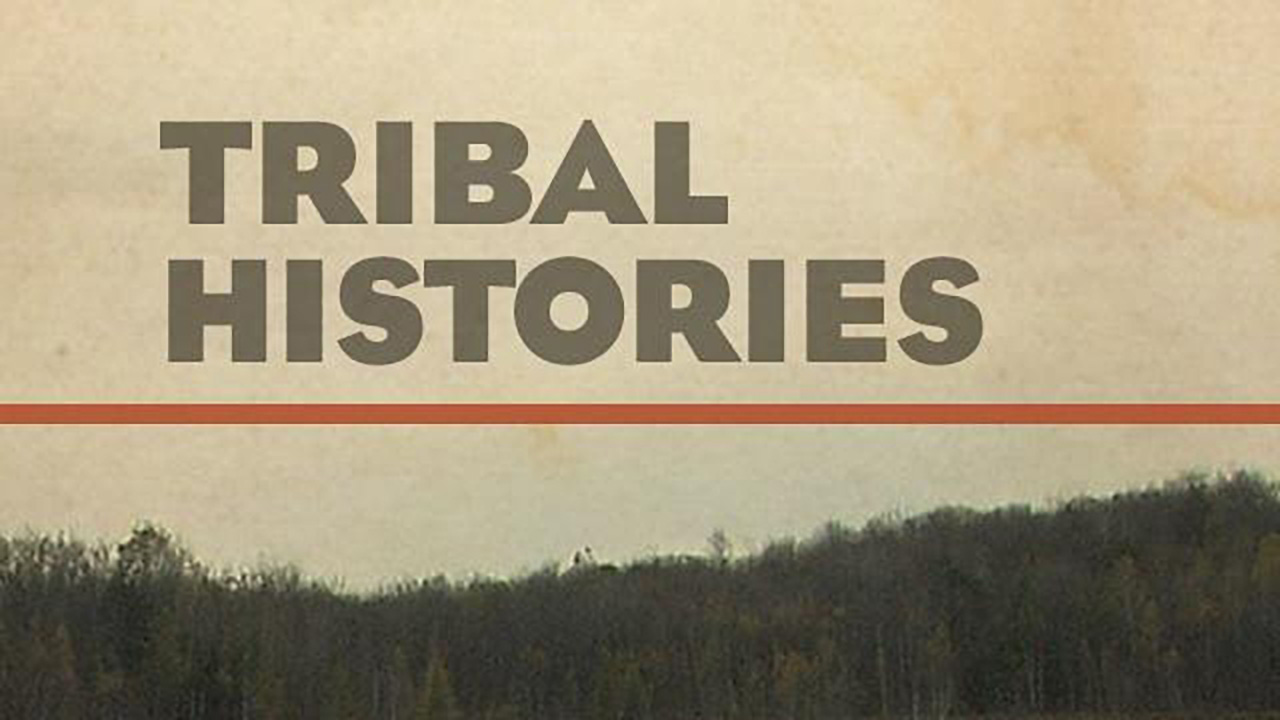
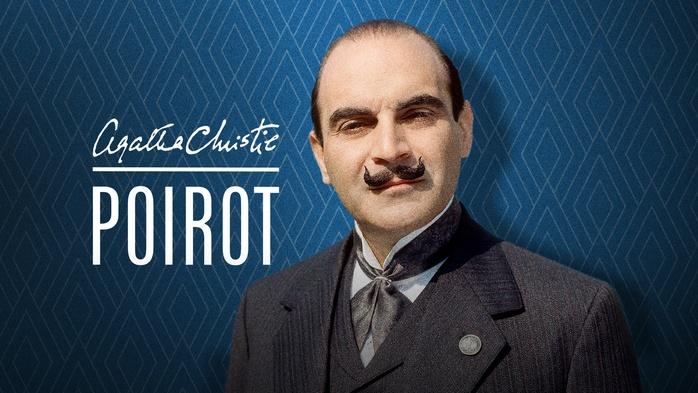

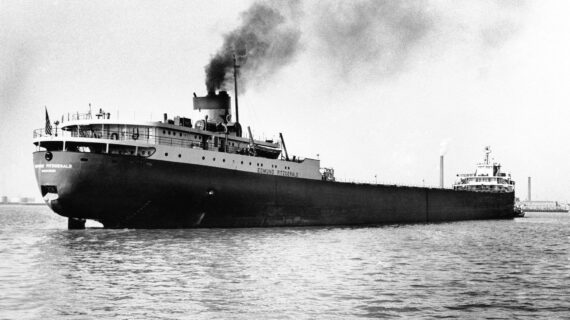


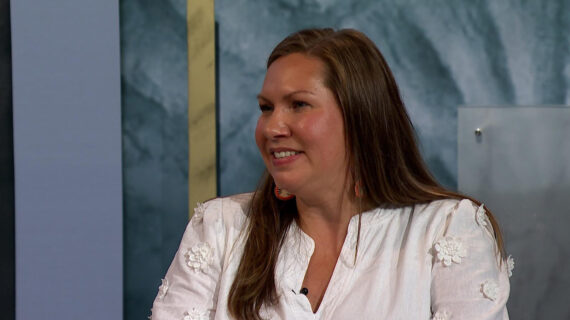
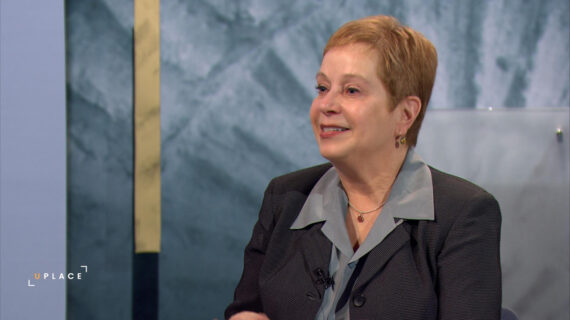
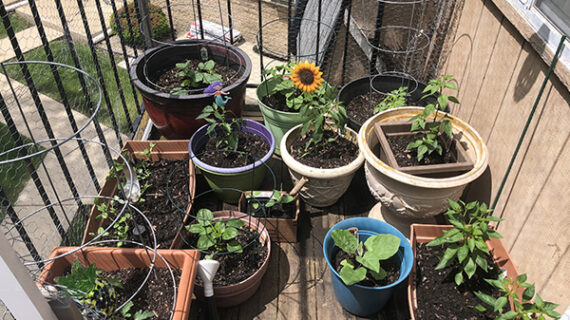
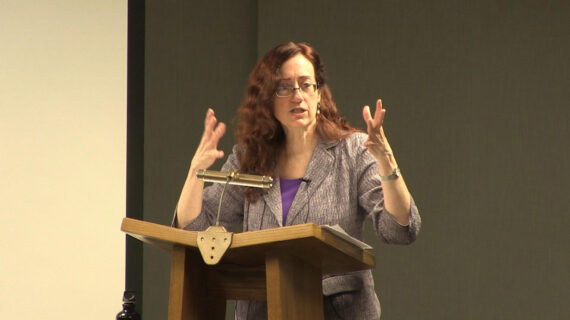
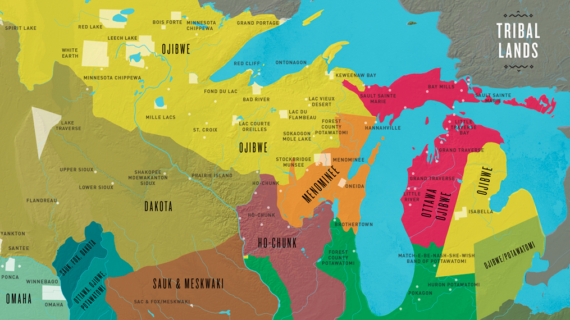
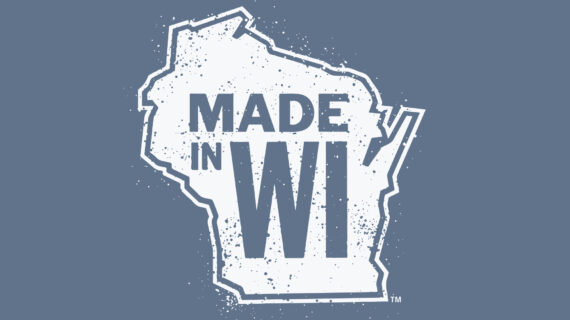

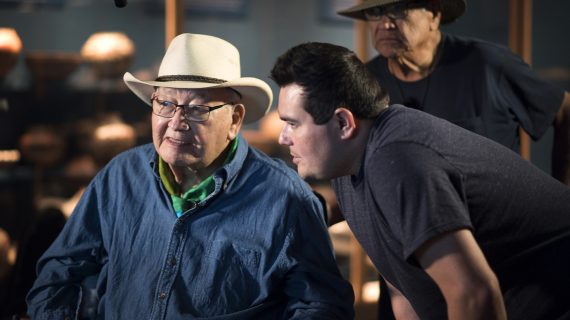


Follow Us